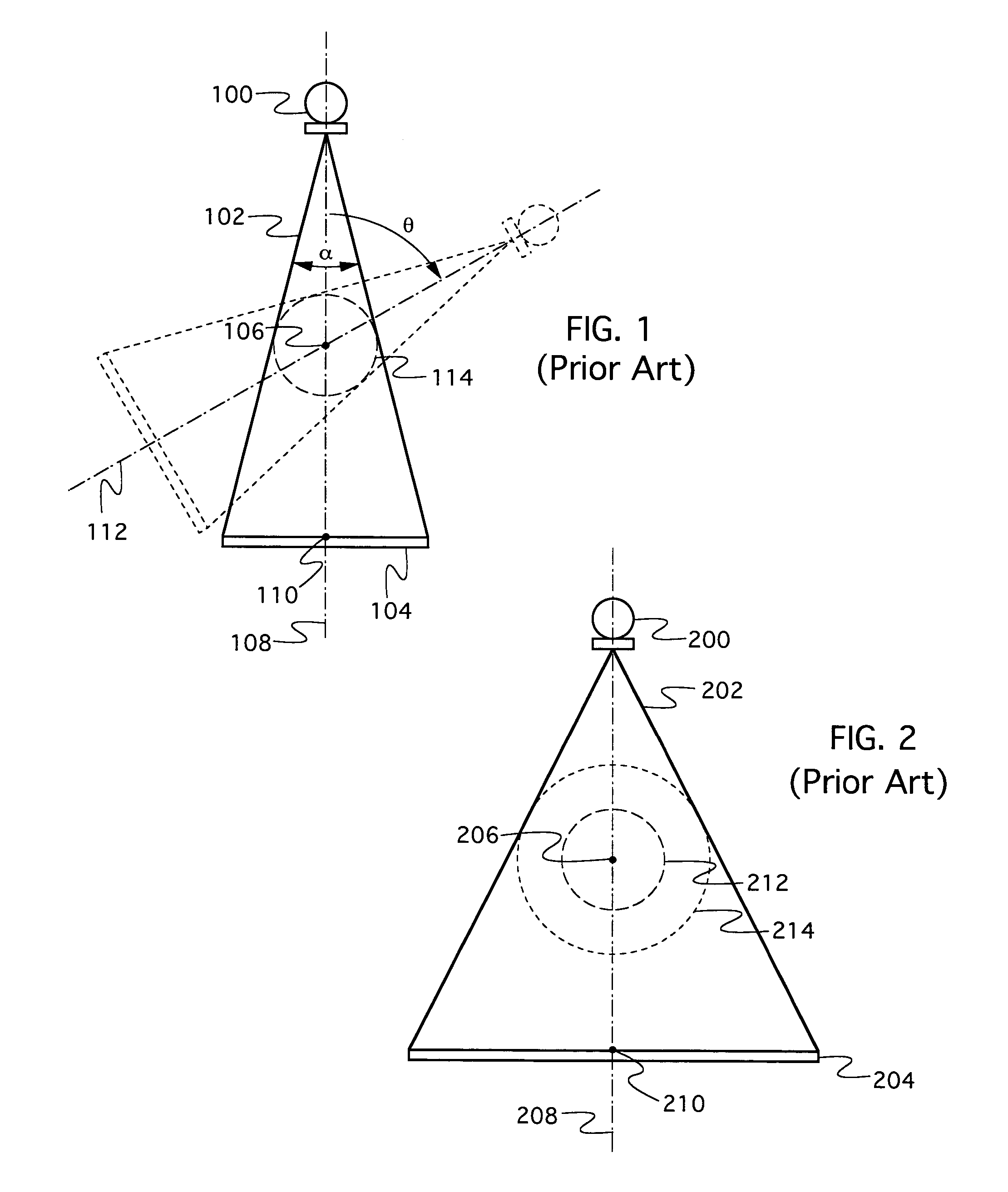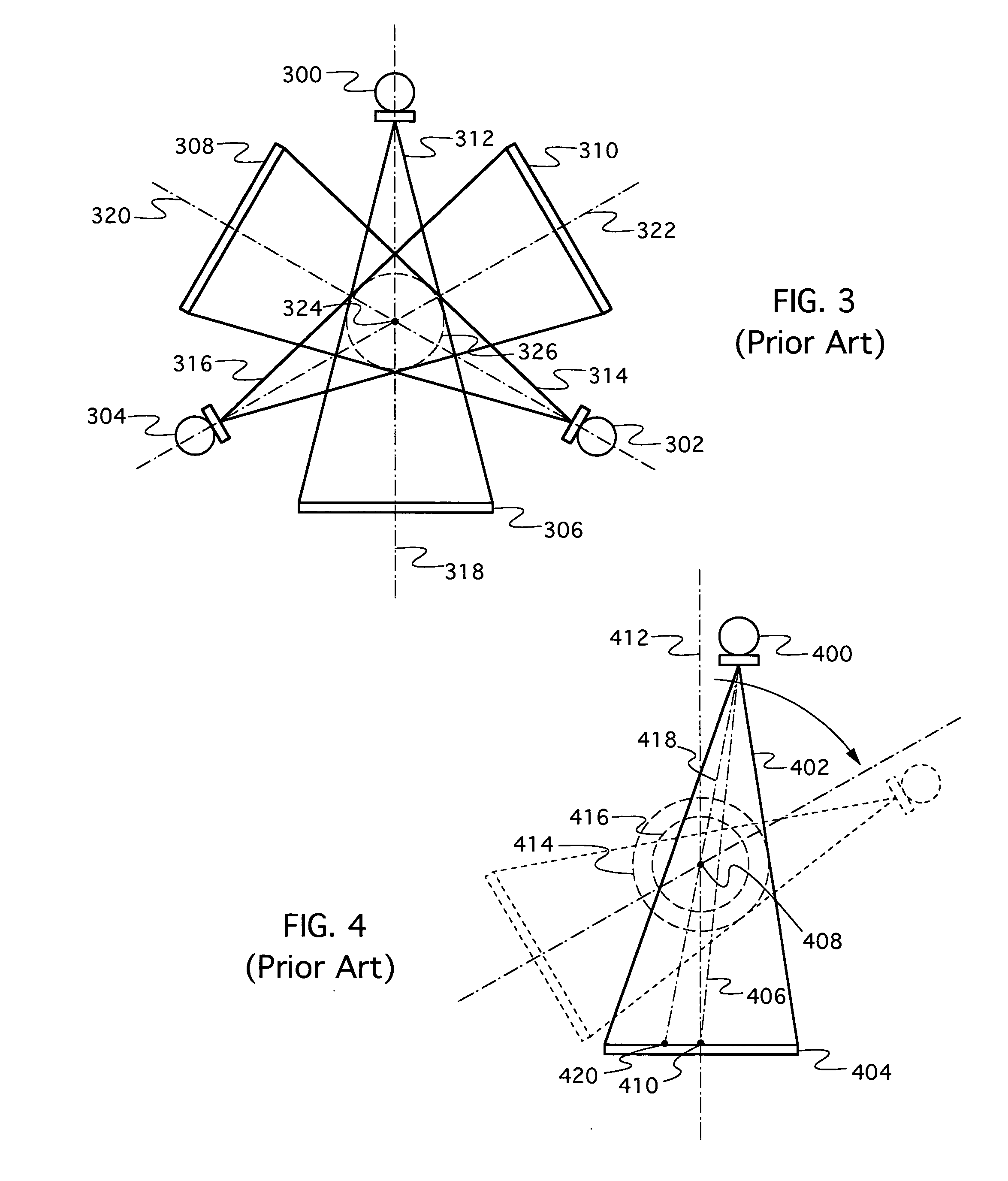Computed tomography with increased field of view
a computed tomography and field of view technology, applied in tomography, applications, instruments, etc., can solve the problems of increasing the size of the array, introducing significant technical difficulty and expense, and reconstructed three-dimensional representation artifacts and errors, etc., to achieve increased fov, increased fov, and larger detector (or source) array sizes
- Summary
- Abstract
- Description
- Claims
- Application Information
AI Technical Summary
Benefits of technology
Problems solved by technology
Method used
Image
Examples
Embodiment Construction
[0020] A volumetric CT system according to one embodiment of the invention is illustrated in FIG. 5. Two x-ray point sources 500 and 502 emit corresponding fan beams 504 and 506 at a single detector array 508 at different corresponding times. X-ray image data is acquired from the detector array 508 to reconstruct a representation of an object of interest. The x-ray point sources 500 and 502, as well as the detector 508 are rotated together around a rotational axis 520 of the system. Consequently, fan beams 504 and 506 also rotate about axis 520. The fan beams 504 and 506 have corresponding central rays 510 and 512 that bisect the detector array 508 at a midpoint 514. Because the multiple fan beams are directed toward a common detector array from sources having different locations, the central rays 510 and 512 have different angular orientations and are radially offset from the rotational axis 520 by a significant offset distance D, resulting in a FOV 516 for the system which is sign...
PUM
| Property | Measurement | Unit |
|---|---|---|
| θ | aaaaa | aaaaa |
| computed tomography | aaaaa | aaaaa |
| offset distance | aaaaa | aaaaa |
Abstract
Description
Claims
Application Information
 Login to View More
Login to View More - R&D
- Intellectual Property
- Life Sciences
- Materials
- Tech Scout
- Unparalleled Data Quality
- Higher Quality Content
- 60% Fewer Hallucinations
Browse by: Latest US Patents, China's latest patents, Technical Efficacy Thesaurus, Application Domain, Technology Topic, Popular Technical Reports.
© 2025 PatSnap. All rights reserved.Legal|Privacy policy|Modern Slavery Act Transparency Statement|Sitemap|About US| Contact US: help@patsnap.com



